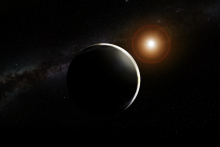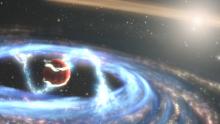Listen to today's episode of StarDate on the web the same day it airs in high-quality streaming audio without any extra ads or announcements. Choose a $8 one-month pass, or listen every day for a year for just $30.
You are here
Spying on Supernovae
A project that’s beginning this month will compile dossiers on hundreds of supernovae. That should give astronomers a better picture of the types of stars that explode, how supernovae interact with their surroundings, and how they seed the cosmos with chemical elements.
The Global Supernova Project is a collaboration of about 150 astronomers around the world. It’ll use about 30 telescopes to monitor supernovae after other projects discover them.
The backbone of the project is the Las Cumbres Observatory — a network of 18 telescopes, including one at McDonald Observatory, with mirrors up to two meters in diameter. Because they’re spaced around the globe, they can follow a supernova around the clock.
That’s especially important in the first days after a supernova explodes. Those early moments reveal details about the original star, such as its composition and structure. But the chemical signatures from some of its expelled materials fade quickly, and the radioactive decay of nickel and other elements soon dominates the light from the supernova debris.
This is a follow-up to an earlier project, which ended last month. During its three-year run, it studied more than 400 supernovae. Among other things, it discovered several new classes of supernova.
The new project is expected to see about 600 supernovae, also over a three-year period. Those observations should help astronomers more fully understand these powerful cosmic blasts.
Script by Damond Benningfield






